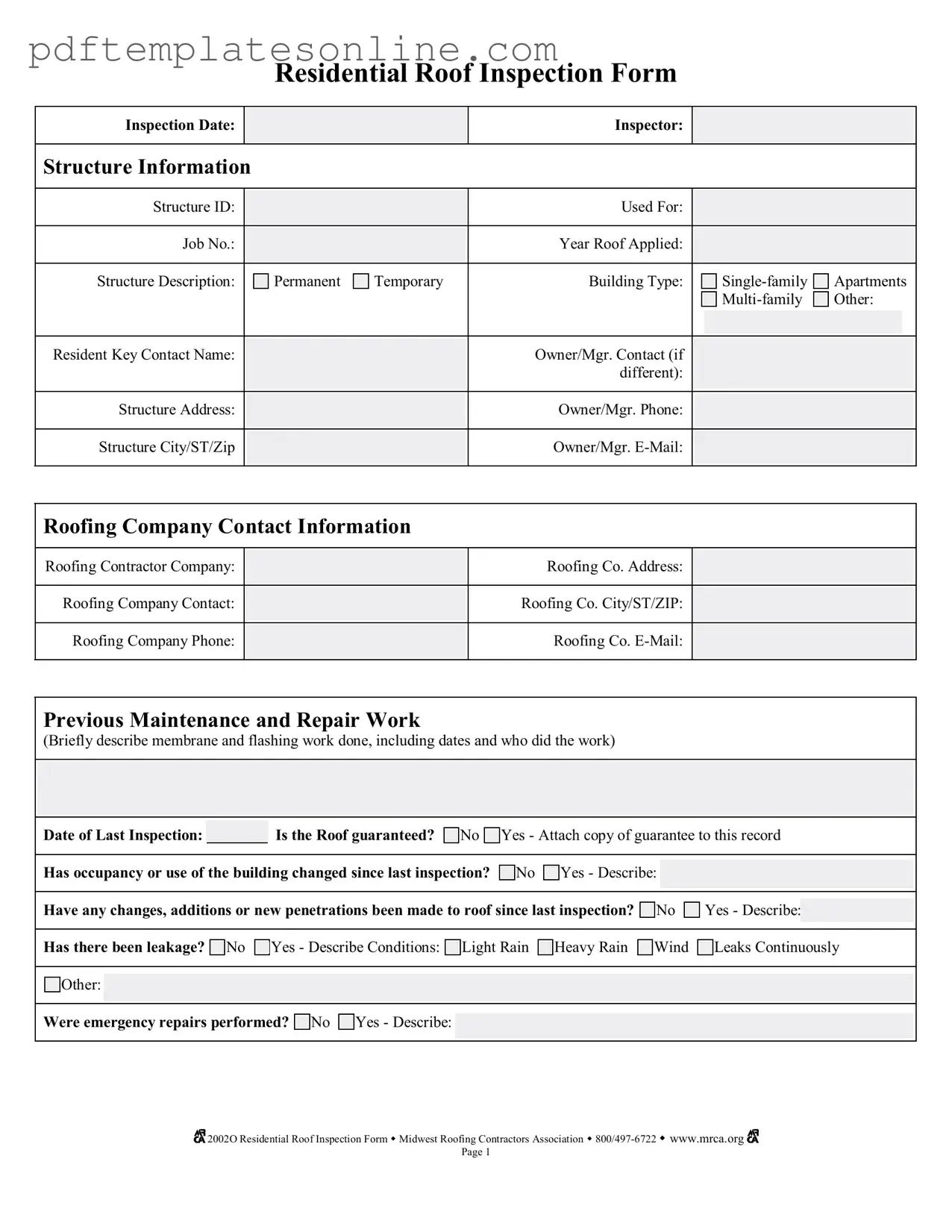Blank Roof Inspection Form
The Roof Inspection Form is a crucial document used to assess the condition of a residential roof. This form collects essential information about the roof's structure, previous maintenance, and any current issues that may need attention. Completing this form helps ensure that roofs are properly maintained and any necessary repairs are identified promptly.
Access Roof Inspection Editor Now
